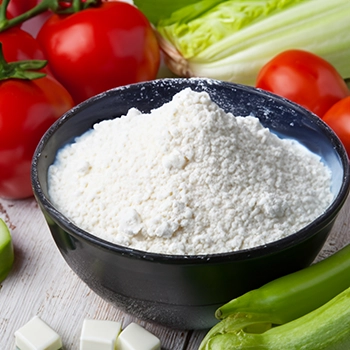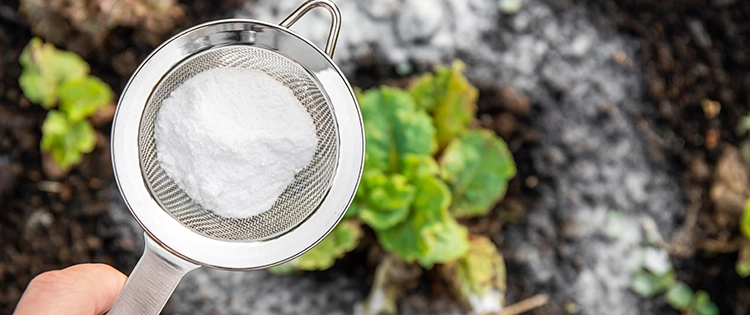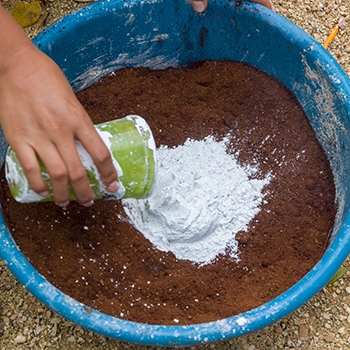Using powdered milk in your garden can leave you with a very interesting aroma around your raised beds. However, if used properly, you can avoid this issue and also reap the benefits of using it. Have a ton of extra? Maybe you even have some powdered formula replacer from a lamb or a calf and you’re looking to use it up before next year. Here, we’ll talk about the potential benefits of powdered milk in its many forms for your garden. Let’s get started.
As a Tea
While I don’t often recommend using a pour-on version of powdered milk, you can do it. In all honesty, I find that very few plants benefit from this. However, if your nursery specifically suggests doing this, then more power to you.
What I usually do in this case is mix my powdered milk with another supplement to encourage fast uptake of the calcium before it leeches into the soil. What in particular? Usually something with D3 or a bone meal. You can steep bone meal and powdered milk in boiling water, allow it to cool, and then add it to your plants, if so desired.
The plants do benefit, but again, I don’t feel like this is the ideal situation to use powdered milk (or formula) in the garden.
As a Direct Addition to Soil
This, however, strikes me so much better. I really prefer to use powdered milk when I’m mixing up a new batch of soil for the garden. I’ll buy a large bag of calf manna and pitch a 3-quart feed scoop in with a wheelbarrow full of soil, powdered milk, or any sort of powdered dairy product (not cheese, the salt will ruin your plants).
I take my time working it through my soil and treat it as I would any dry supplement. I find it works best when allowed to rest in the bed, pot, or other planting situation for a few weeks as opposed to using it right away. Why? Much like the tea above, calcium and the various trace minerals you’ll find in powdered milk will break down and become more bioavailable for your plants if allowed to stew or rest for a period of time. Essentially, the nitrogen cycle works its magic and makes it easier for the plants to uptake it.
As a Powdered Calcium Supplement
This one is a little bit tricky.
Some people use powdered milk as a top dressing. While you can do this, you’re essentially making a forever tea that may or may not work for your plant. I suggest caution on this one, simply because it can come back to bite you.
How? Spoiled milk can slowly attract insects. Flies, biting lice, and so on and so forth. I really love that spoiled, nasty smell. It becomes a serious issue and can ruin delicate fruits and vegetables in pretty short order. This includes tomatoes, and I’ve noticed this has especially become a trend with beginning tomato gardeners.
Rather than using it as a top dressing, my suggestion is to pick one of the two following possibilities and use it in this manner instead: a spike or a mix-in.
Mixing in your powdered milk involves gently scraping up the soil 1/4″-3/4″ on top and sprinkling the powdered milk heavily into these crevices. Then, you cover the milk and water as usual. This hides the source of the scent from the insects and usually makes them leave; none of the species that find the scent attractive can dig that deep to find the source and give up quickly.
If you decide to make a spike, put on some waterproof gloves and put 1/2 cup of powdered milk in a small, long dish. add a little water, just enough to make the powdered milk tacky and stick together. Slowly roll it together to create a delicate but thin spike for your plant, much as you would use a fertilizer spike. Again, make sure to cover the top part of it so it doesn’t attract pests.
Drawbacks
The smell of sour milk in your garden sucks. Few people want to deal with it, so many have decided to use bone meal instead of powdered milk for this sort of thing. However, the biggest difference is that of D3, since so many powdered milk companies automatically add it.
While your plant should be capable of getting its own vitamin D, it is important to make sure that sickly or infested plants are given the maximum amount of care possible. Essentially, powdered milk should not be purchased highly piggy and thrown in your garden if things are going well. But if you have extra, this is a great way to use it up and not just throw it away. Personally? I’d rather use bone meal or eggshells and offer the powdered milk to the pigs. If you don’t have pigs, your garden is a good way to use it.
Goat vs Cow
We’re going to leave livestock formulas out of this for the moment and only speak about the differences between goat and cow powdered milk. Though I’m well aware that sheep powdered milk exists, it’s pretty rare and it’s not likely to be something you have sitting around waiting to be used up; you probably bought it for a very specific purpose.
Cow’s milk is less fatty and will wane in the ground faster than goat milk will. Though both have similar calcium ratios, if you have very lean soil with very low amendments, goat milk will take better care of your plants in the long run. Fat, after all, is fuel. And our plants need it as much as we do. The globules of the goat milk itself as smaller and easier to absorb than those of a cow’s milk, too.
Have you used powdered milk in your garden? What type did you use and why? We’d love to hear from you in the comments below and remember, Happy Gardening!
You may also like:
The Five Plants You Can Use to Make Strong Natural Cordage (Video)
15 Gardening Mistakes You’re Making Right Now
How To Grow An Emergency Garden
Vegetable Independence – 100% Self-Reliant Vegetable Production












